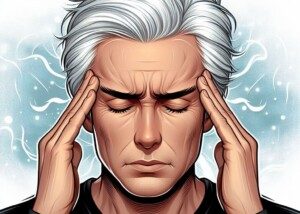
Cardiac rehab will help you reduce your risk of stroke after having a transient ischemic attack.
If you’ve been diagnosed with a transient ischemic attack (TIA), then you know this is a mini stroke which means you’re at significant risk for suffering a major stroke in the near future — unless you take measures to prevent this.
A TIA results when a blood clot in the brain chokes off oxygen to the area that the blood vessel, where the clot is, feeds.
The clot usually dissolves within minutes, so the symptoms are transient or temporary.
A report in Stroke: Journal of the American Heart Association has something to say about transient ischemic attacks.
The senior researcher, Neville Suskin, notes that cardiac rehab addresses the risk factors for a stroke.
The Suskin study was small and looked into mild stroke and TIA rather than major stroke.
Nevertheless, if you suffer a TIA or mild stroke, these are still harbingers of a major stroke in the near future.
For the study, the participatns — all whom had a TIA or mild stroke the prior year — did cardio rehab for over seven months and then were re-evaluated for risk factors.
What was the cardiac rehab?
It involved exercise, nutrition education, medication management, smoking cessation and stress reduction.
Eighty people completed the cardiac rehab. The report says that “overall,” the subjects improved quite a bit in their risk profile.
This includes peak exercise capacity. Other improvements included blood lipids, waist circumference, body mass index and blood pressure.
Eleven additional patients were recategorized to lowest death risk after initially being at moderate or high risk of dying during the following year.
Self-Cardiac Rehab
If you’re afraid of getting a transient ischemic attack or have already had one, do the same things that you’d do to prevent a heart attack.
“There are two main types of risk factors in getting stroke [or TIA] which are modifiable and non-modifiable,” says Sashini Seeni, MD, a family medicine practitioner with DoctorOnCall, an online doctor and pharmacy.
“By knowing your risk factors, you might be able to manage them accordingly to lower your chance of getting stroke.
“Routine blood pressure measurement. The higher the blood pressure, the higher the chances of getting stroke. Check your BP routinely.”
According to the American College of Cardiology and the American Heart Association, it should be under 130/80. Otherwise, consult with your physician.
“Stop smoking,” says Dr. Seeni. “It is one of the major risk factors.
“Get a healthy balanced diet. Lower your cholesterol intake, get more fiber, fruits and veggies in your menu.” Lentils and beans are particularly high in fiber.
Finally, Dr. Seeni urges people to exercise. Housework and walking Fluffy around the block don’t count.
Sign up for group fitness classes or work out at home to videos. Join a gym. Take up yoga or martial arts. Go on hikes. Buy a pair of dumbbells. The list is endless.

 DoctorOnCall
DoctorOnCall 







































